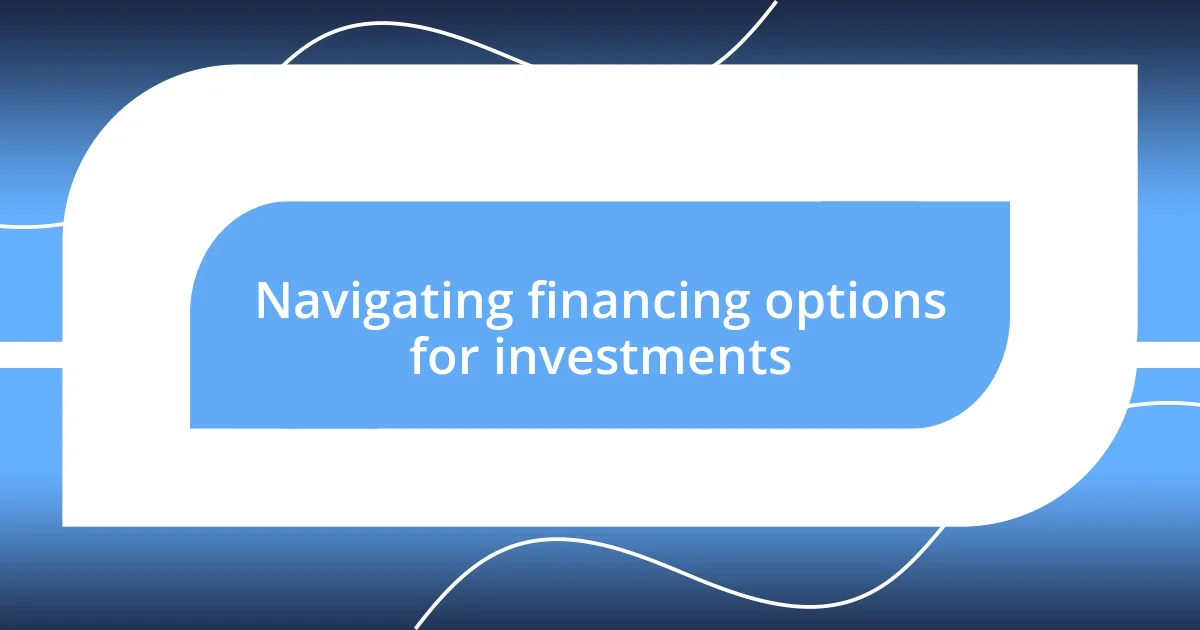Key takeaways:
- Understanding the nuances of commercial real estate is essential; different property types have unique demands, such as retail spaces relying on foot traffic.
- Key metrics for property analysis, including cap rate and NOI, provide clarity and confidence in investment decisions.
- Successful property management hinges on clear communication, proactive maintenance, and leveraging technology to enhance tenant experiences and streamline operations.

Understanding commercial real estate
Commercial real estate can sometimes feel like a maze, filled with its own set of rules and market dynamics. I remember my first day on the job, staring at spreadsheets and wondering, “How do these numbers translate into real value?” It was a moment of clarity when I realized that behind every building or office park, there are stories, opportunities, and challenges that shape the landscape.
At its core, commercial real estate encompasses properties used for business purposes, such as retail spaces, offices, warehouses, and more. Each category comes with its own nuances—did you know that retail spaces often depend heavily on foot traffic while warehouses thrive on logistics efficiency? I’ve felt the thrill of finding just the right location that suits a client’s vision, much like piecing together a puzzle that finally makes sense.
When considering an investment in commercial real estate, it’s crucial to think about the broader economic trends and local market conditions. I often ask myself, “Is this property positioned for growth?” Understanding the ebb and flow of demand, zoning laws, and economic indicators can make all the difference in seizing an opportunity that not only pays off but also fulfills a vision I didn’t know I had until I found it.

Key metrics for property analysis
When diving into property analysis, certain metrics stand out and can guide your decision-making. In my experience, understanding these key indicators feels like wielding a compass in unfamiliar terrain. For instance, I once advised a client who was hesitant about a property’s price until we examined the cap rate and discovered an excellent potential yield. It’s truly enlightening to see how numbers can paint a clearer picture of value and risk.
Here are some essential metrics to consider when analyzing a property:
- Cap Rate (Capitalization Rate): This metric indicates the expected return on an investment, calculated by dividing the property’s net operating income by its purchase price.
- NOI (Net Operating Income): It reflects the income generated by a property after all operating expenses are deducted, giving a solid indication of the property’s profitability.
- Cash-on-Cash Return: This measures the annual return on investment based on the cash invested, which can be particularly revealing for those looking into financing options.
- Occupancy Rate: Understanding how occupied a property is can forecast cash flow and attractiveness to potential tenants or buyers.
- IRR (Internal Rate of Return): This rate helps in evaluating the profitability of an investment over time, factoring in cash flows and the eventual sale of the property.
I always find a thrill in breaking down these numbers with clients, transforming what might seem like intimidating data into actionable insights. It’s astounding how a deeper dive into these metrics can turn hesitation into confidence—allowing one to make informed decisions that could positively impact their investment journey.

Strategies for successful property management
Certainly! Here are three engaging paragraphs along with a comparison table that discusses strategies for successful property management:
Effective property management begins with clear communication. I remember managing a mixed-use property where tenants spanned businesses and residential units. By establishing regular check-ins with each tenant, I fostered a sense of community and quickly identified issues before they escalated. This experience taught me that open lines of communication not only enhance tenant satisfaction but also streamline property operations.
Maintenance is another pillar of property management. I once faced a situation where a minor leak turned into a major repair because it went unnoticed for too long. Investing in a reliable maintenance team and implementing a preventative maintenance schedule reduced emergencies and saved my clients considerable amounts of money. I’ve learned that proactive maintenance not only preserves property value but also builds trust with tenants who see that their concerns are addressed promptly.
Additionally, leveraging technology can be a game changer in property management. I recall implementing a digital platform that streamlined rent collection and maintenance requests for my properties. The shift not only improved efficiency but also empowered tenants to engage directly with their management team. By embracing technology, property managers can enhance operations, improve tenant experiences, and stay competitive in a rapidly evolving market.
| Strategy | Description |
|---|---|
| Clear Communication | Establish regular check-ins to foster relationships and address issues quickly. |
| Proactive Maintenance | Implement a maintenance schedule to prevent small issues from becoming costly repairs. |
| Leverage Technology | Use digital tools for rent collection and maintenance requests to streamline operations. |

Navigating financing options for investments
When approaching financing options for commercial real estate investments, understanding your choices can feel a bit like standing at a crossroads. In my early days, I remember being overwhelmed by the variety of financing sources, from traditional bank loans to more innovative avenues like crowdfunding. Was I missing a golden opportunity by sticking to conventional routes? That’s a question that stayed with me until I explored options that better aligned with my goals.
In my experience, it’s essential to consider not just the financial metrics but also how each financing option impacts cash flow. For instance, I once partnered with a client who chose a short-term bridge loan to acquire a property quickly. While it worked well in their favor due to a rising market, the higher interest rates reminded us both of the importance of having an exit strategy. Knowing the implications of your financing decisions can protect you from unforeseen surprises.
Moreover, leveraging your network can unlock financing paths you might not initially consider. I recall attending a real estate seminar where a fellow investor shared insights on private equity firms willing to fund promising projects. That particular interaction helped me secure funding on favorable terms for my own investments. Isn’t it intriguing how conversations can sometimes lead to financial breakthroughs? By actively seeking knowledge and maintaining connections, you can navigate the complexities of financing with greater confidence.














